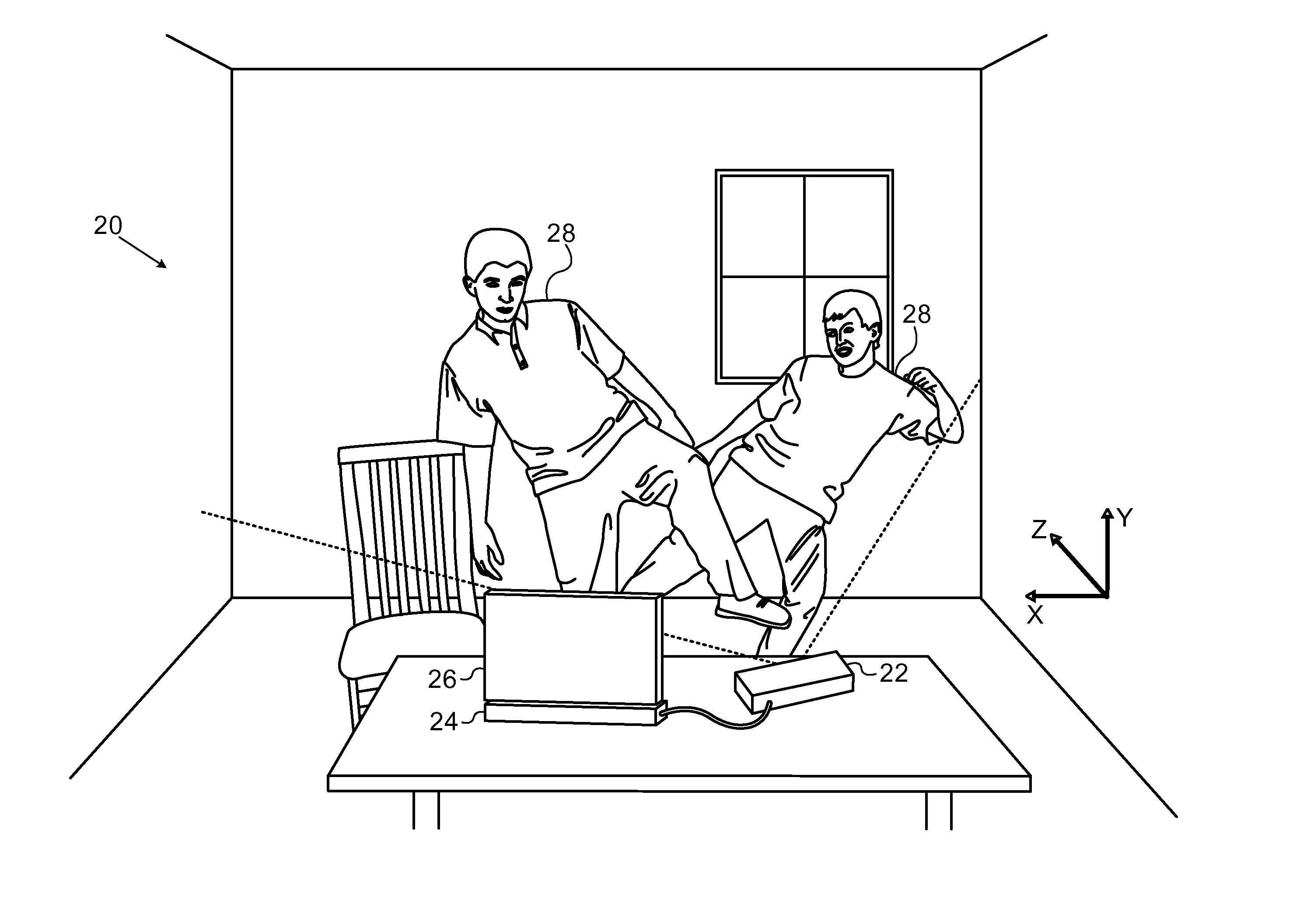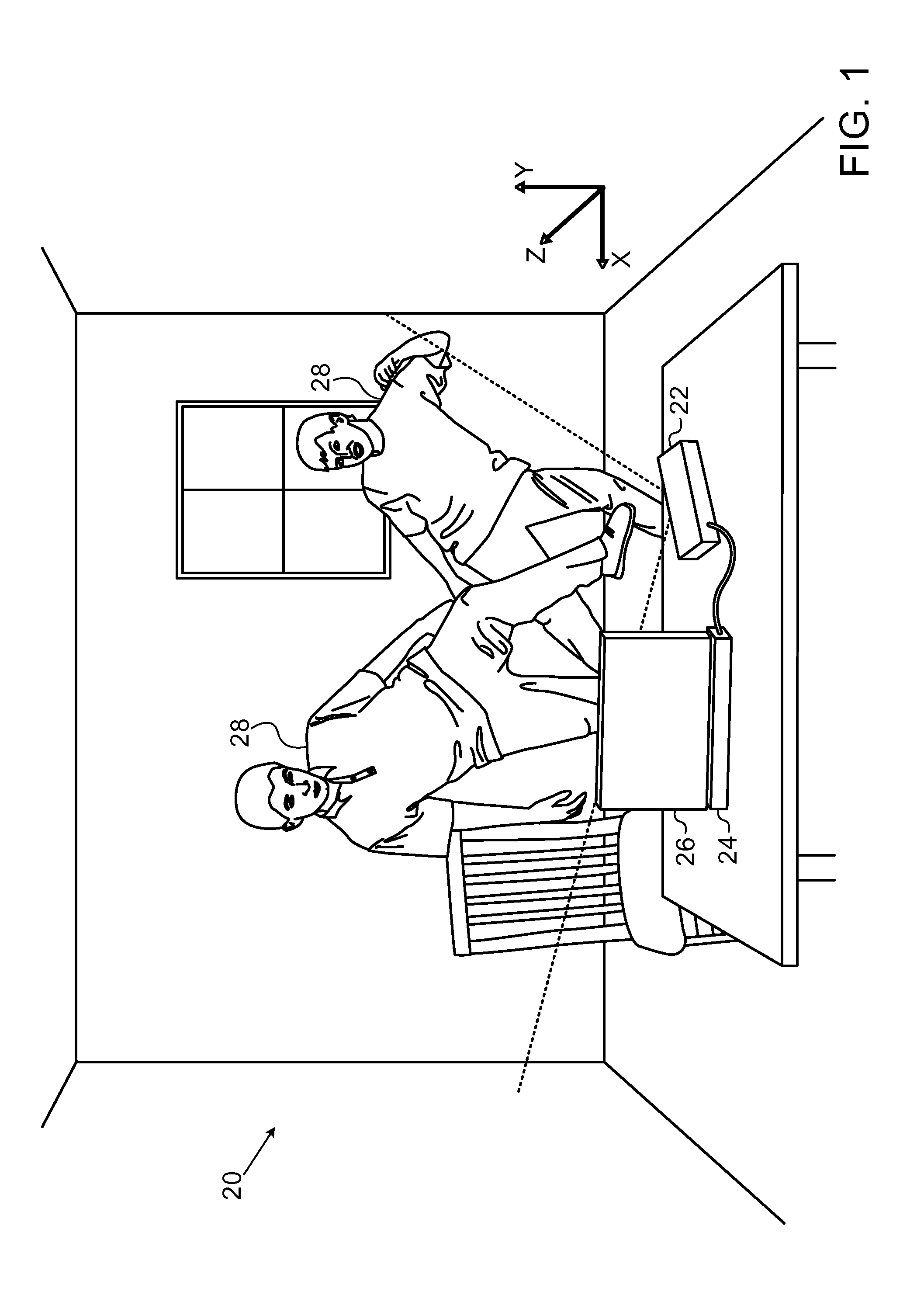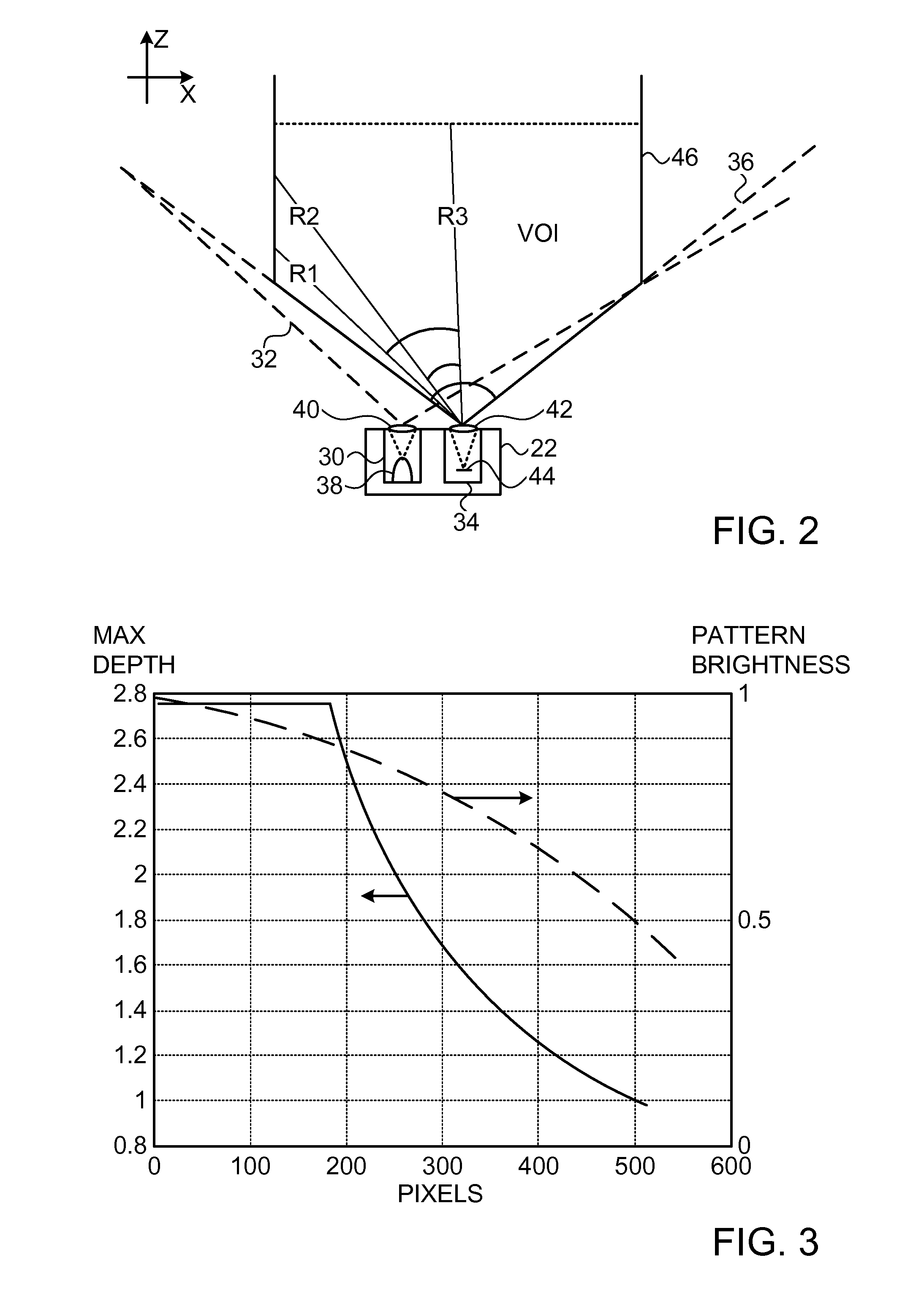Non-uniform spatial resource allocation for depth mapping
a spatial resource allocation and depth mapping technology, applied in the field of depth mapping methods and systems, can solve the problems of limited resources in the depth mapping system in practice (in common with imaging systems generally) and non-uniform variation of the application of at least one resource, so as to improve the overall system performance and limit resources
- Summary
- Abstract
- Description
- Claims
- Application Information
AI Technical Summary
Benefits of technology
Problems solved by technology
Method used
Image
Examples
Embodiment Construction
[0017]In creating a depth mapping system, the designer typically attempts to optimize the 3D resolution of the system, including both the effective number of pixels in the map and the number of depth gradations. The resolution is limited, however, by the available resources, including the resolution and signal / noise ratio of the image capture module and, in active depth mapping systems, the power and pattern definition of the illumination module. (The term “active” is used in the context of the present patent application to refer to depth mapping techniques in which a pattern of optical radiation is projected onto an object and an image of the patterned radiation reflected from the object is captured by an imaging device. The pattern may be a spatial pattern, as in patterned illumination imaging systems, or a temporal pattern, as in time-of-flight imaging systems, or it may contain a combination of spatial and temporal patterns.)
[0018]Embodiments of the present invention that are de...
PUM
 Login to View More
Login to View More Abstract
Description
Claims
Application Information
 Login to View More
Login to View More - R&D
- Intellectual Property
- Life Sciences
- Materials
- Tech Scout
- Unparalleled Data Quality
- Higher Quality Content
- 60% Fewer Hallucinations
Browse by: Latest US Patents, China's latest patents, Technical Efficacy Thesaurus, Application Domain, Technology Topic, Popular Technical Reports.
© 2025 PatSnap. All rights reserved.Legal|Privacy policy|Modern Slavery Act Transparency Statement|Sitemap|About US| Contact US: help@patsnap.com



